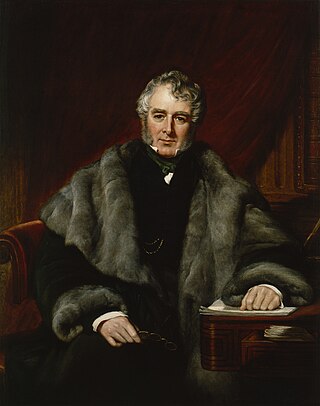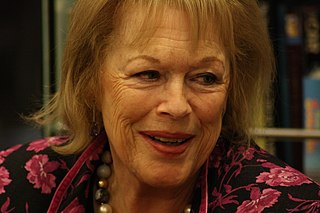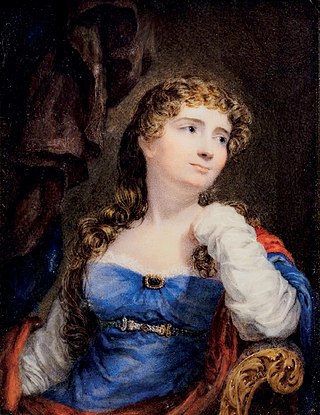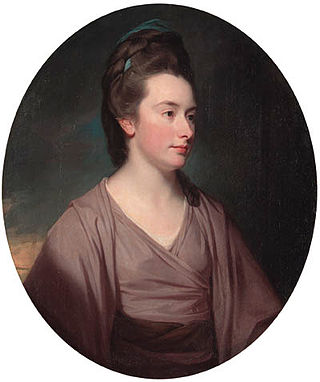
Augusta Ada King, Countess of Lovelace, also known as Ada Lovelace, was an English mathematician and writer chiefly known for her work on Charles Babbage's proposed mechanical general-purpose computer, the Analytical Engine. She was the first to recognise that the machine had applications beyond pure calculation.

Henry William Lamb, 2nd Viscount Melbourne was a British Whig politician who served as the Home Secretary and twice as the Prime Minister of the United Kingdom.

Lady Antonia Margaret Caroline Fraser, is a British author of history, novels, biographies and detective fiction. She is the widow of the 2005 Nobel Laureate in Literature, Harold Pinter (1930–2008), and prior to his death was also known as Lady Antonia Pinter.

Lady Caroline Lamb is a 1972 British epic romantic drama film based on the life of Lady Caroline Lamb, novelist, sometime lover of Lord Byron and wife of politician William Lamb, 2nd Viscount Melbourne. The only film written and directed by Robert Bolt, it starred his wife, Sarah Miles, as Lady Caroline, Jon Finch, Richard Chamberlain, Laurence Olivier, Ralph Richardson, John Mills, Margaret Leighton and Michael Wilding.

Lady Caroline Lamb was an Anglo-Irish aristocrat and novelist, best known for Glenarvon, a Gothic novel. In 1812, she had an affair with Lord Byron, whom she described as "mad, bad, and dangerous to know". Her husband was the Honourable William Lamb, who after her death became 2nd Viscount Melbourne and British prime minister.

Bleak House is a novel by Charles Dickens, first published as a 20-episode serial between 12 March 1852 and 12 September 1853. The novel has many characters and several subplots, and is told partly by the novel's heroine, Esther Summerson, and partly by an omniscient narrator. At the centre of Bleak House is a long-running legal case in the Court of Chancery, Jarndyce and Jarndyce, which comes about because a testator has written several conflicting wills. In a preface to the 1853 first edition, Dickens said there were many actual precedents for his fictional case. One such was probably Thellusson v Woodford, in which a will read in 1797 was contested and not determined until 1859. Though many in the legal profession criticised Dickens's satire as exaggerated, Bleak House helped support a judicial reform movement that culminated in the enactment of legal reform in the 1870s.

Anne Isabella Noel Byron, 11th Baroness Wentworth and Baroness Byron, nicknamed Annabella and commonly known as Lady Byron, was an educational reformer and philanthropist who established the first industrial school in England, and was an active abolitionist. She married the poet George Gordon Byron, more commonly known as Lord Byron, and separated from him after less than a year, keeping their daughter Ada Lovelace in her custody despite laws at the time giving fathers sole custody of children.
Henry Colburn was a British publisher.

Sarah Sophia Child Villiers, Countess of Jersey, born Lady Sarah Fane, was an English noblewoman and banker, and through her marriage a member of the Villiers family.

Caroline Pafford Miller was an American novelist. She gathered the folktales, stories, and archaic dialects of the rural communities she visited in her home state of Georgia in the late 1920s and early 1930s, and wove them into her first novel, Lamb in His Bosom, for which she won the Pulitzer Prize for Fiction in 1934, and the French literary award, the Prix Femina Americain in 1935. Her success as the first Georgian winner of the fiction prize inspired Macmillan Publishers to seek out more southern writers, resulting in the discovery of Margaret Mitchell, whose first novel, Gone with the Wind, also won a Pulitzer Prize for Fiction in 1937. Miller's story about the struggles of nineteenth-century south Georgia pioneers found a new readership in 1993 when Lamb in His Bosom was reprinted, one year after her death. In 2007, Miller was inducted into the Georgia Writers Hall of Fame.
The Hon. George Lamb was a British politician and writer.

George Gordon Byron, 6th Baron Byron, was an English poet and peer. He is one of the major figures of the Romantic movement, and is regarded as being among the greatest of British poets. Among his best-known works are the lengthy narratives Don Juan and Childe Harold's Pilgrimage; many of his shorter lyrics in Hebrew Melodies also became popular.
Glenarvon was Lady Caroline Lamb's first novel. It created a sensation when published on 9 May 1816. Set in the Irish Rebellion of 1798, the book satirized the Whig Holland House circle, while casting a sceptical eye on left-wing politics. Its rakish title character, Lord Glenarvon, is an unflattering depiction of her ex-lover, Lord Byron. In 1866, it was reprinted under the title, The Fatal Passion.

Jane Elizabeth Harley, Countess of Oxford and Countess Mortimer was an English noblewoman, known as a patron of the Reform movement and a lover of Lord Byron.
Margaret Elizabeth Jenkins was an English novelist and biographer of Jane Austen, Henry Fielding, Lady Caroline Lamb, Joseph Lister and Elizabeth I. Elizabeth Bowen said Jenkins was "among the most distinguished living English novelists."

Rosina Bulwer-Lytton, Baroness Lytton, was an Anglo-Irish writer who published fourteen novels, a volume of essays, and a volume of letters.

Elizabeth Lamb, Viscountess Melbourne was one of the most influential of the political hostesses of the extended Regency period, and the wife of Whig politician Peniston Lamb, 1st Viscount Melbourne. She was the mother of William Lamb, 2nd Viscount Melbourne, who became Prime Minister of the United Kingdom, and several other influential children. Lady Melbourne was known for her political influence and her friendships and romantic relationships with other members of the English aristocracy, including Georgiana Cavendish, Duchess of Devonshire, Francis Russell, 5th Duke of Bedford, and George, Prince of Wales. Because of her numerous love affairs, the paternity of several of her children is a matter of dispute.
Katherine Thomson (1797–1862) was an English writer, known as a novelist and historian.

Ada Buisson was an English novelist best remembered for her ghost stories.

Graham Hamilton is an 1822 two volume novel by the Anglo-Irish writer Lady Caroline Lamb. Her second novel to be published following her 1816 debut Glenarvon, it mocks and attacks the Whig high society in which she had been raised. It was published anonymously by Henry Colburn. Her husband William assisted by proofreading the drafts. Lamb was a noted figure of the Regency era who had caused a scandal with her tempestuous affair with Lord Byron. Her debut novel Glenarvon had been a thinly-disguised depiction of him.















